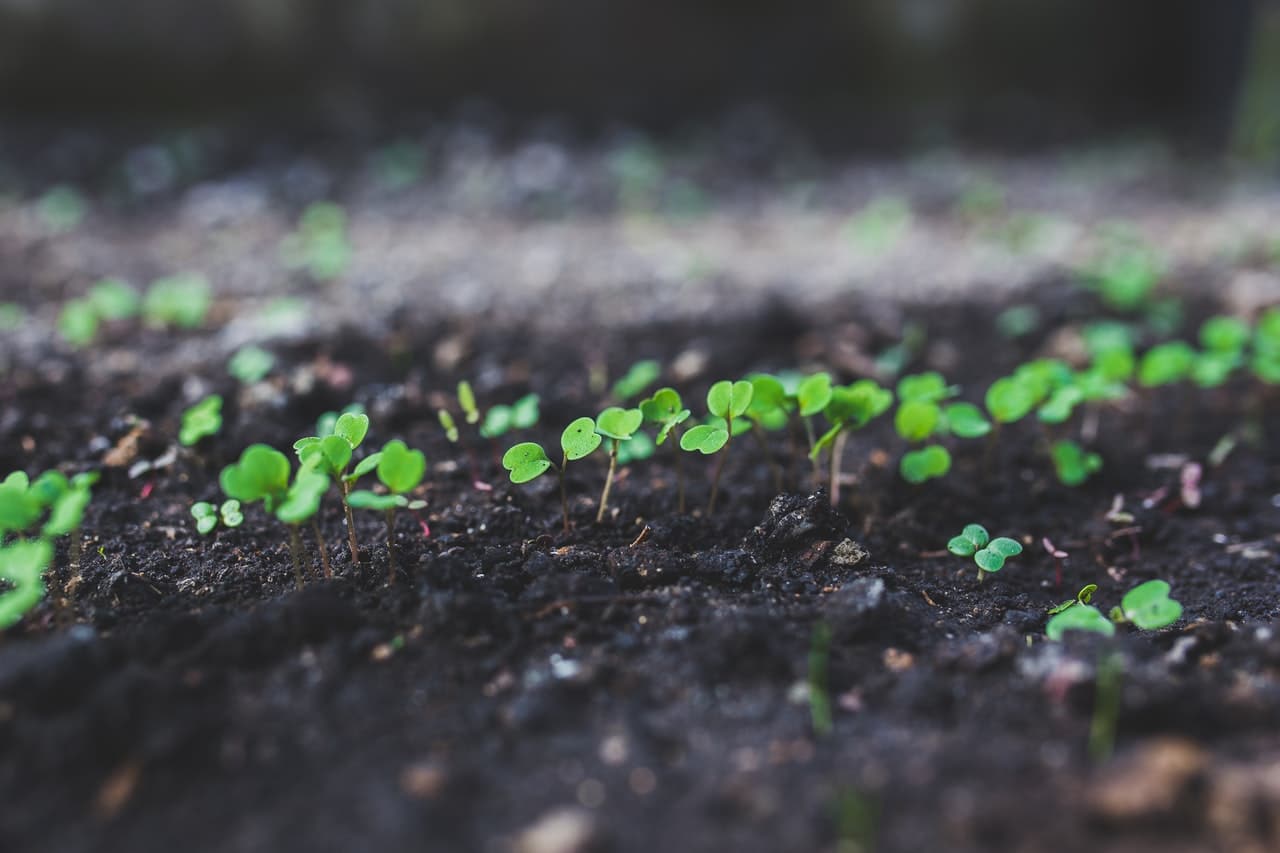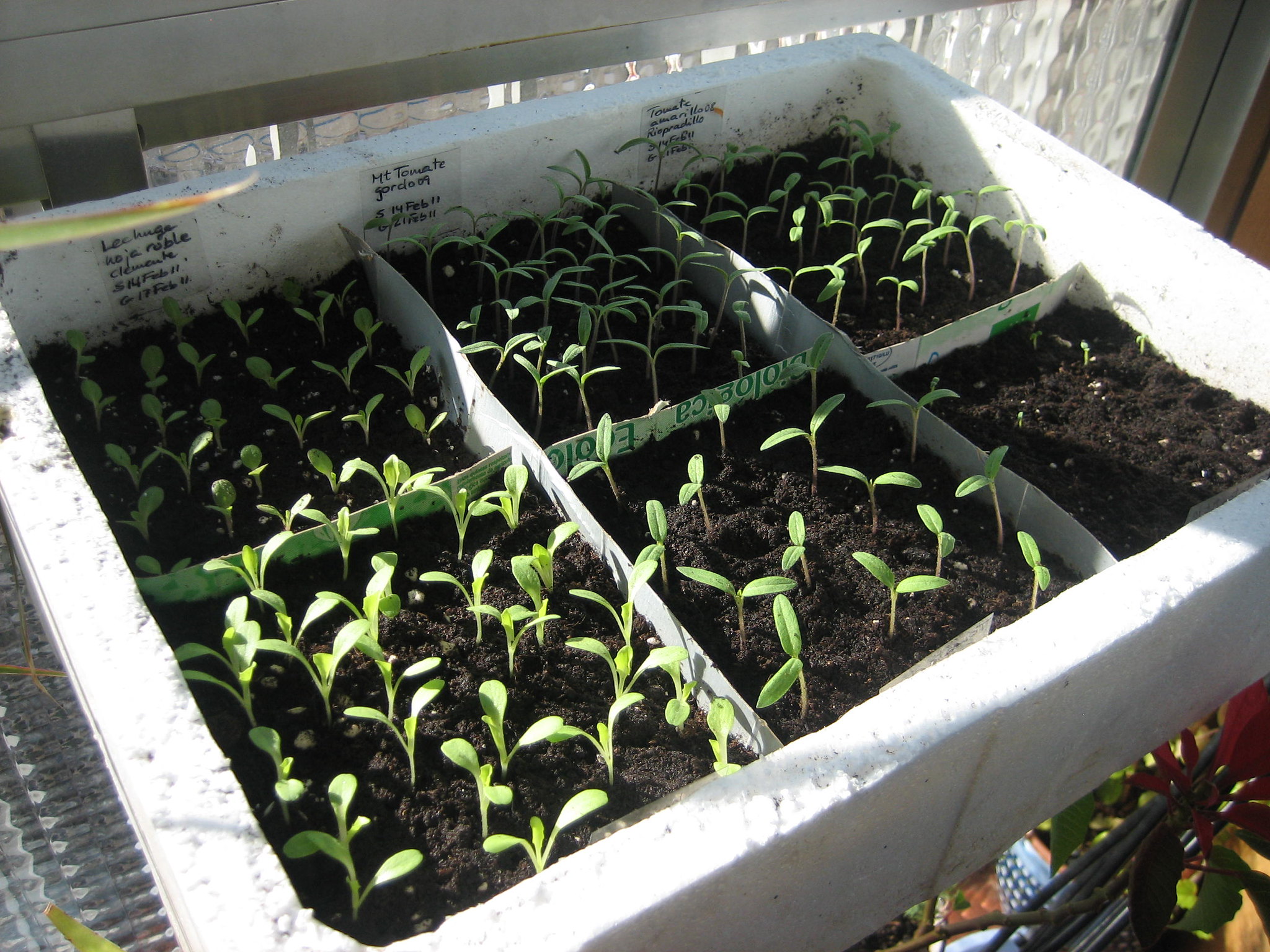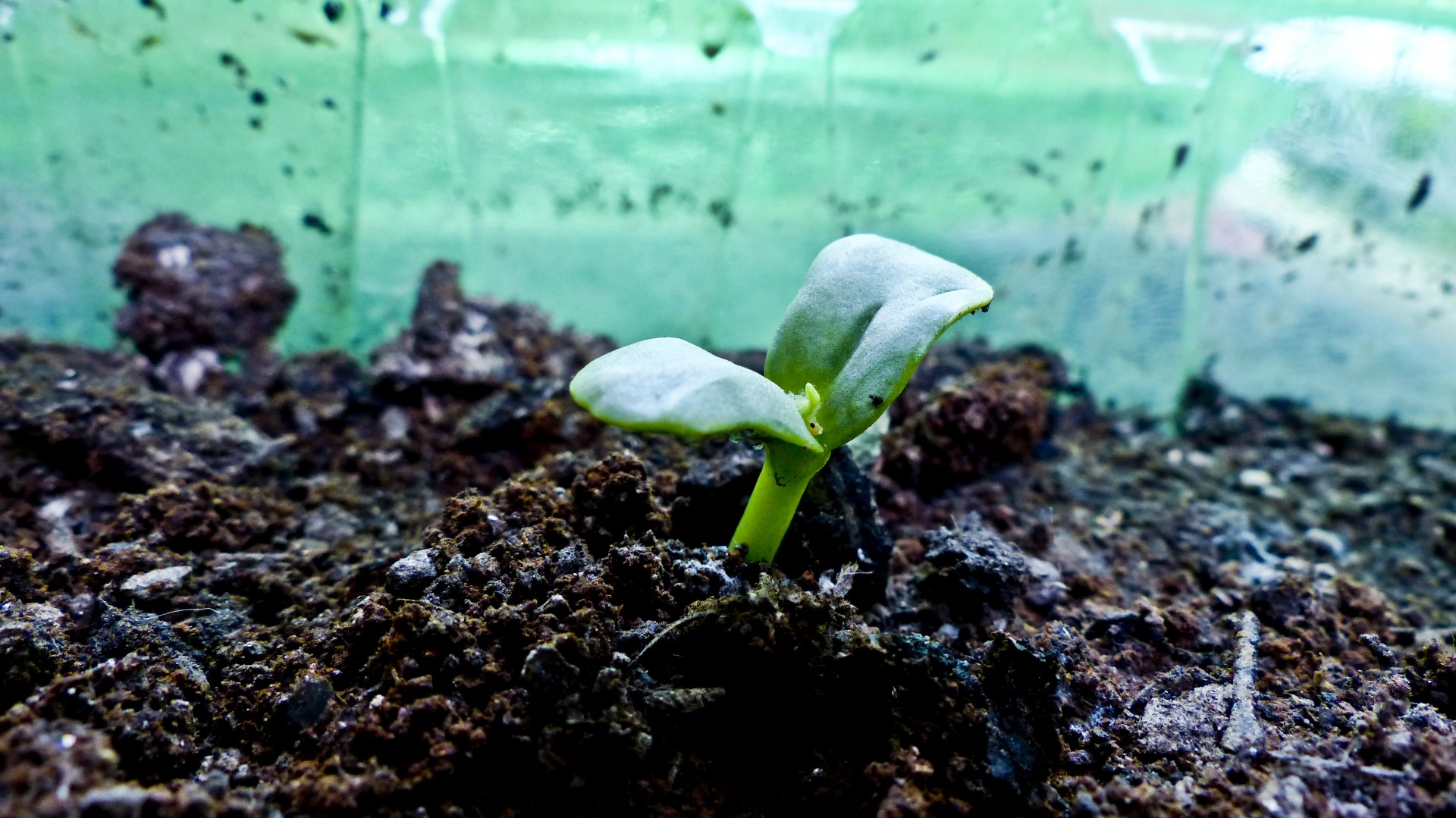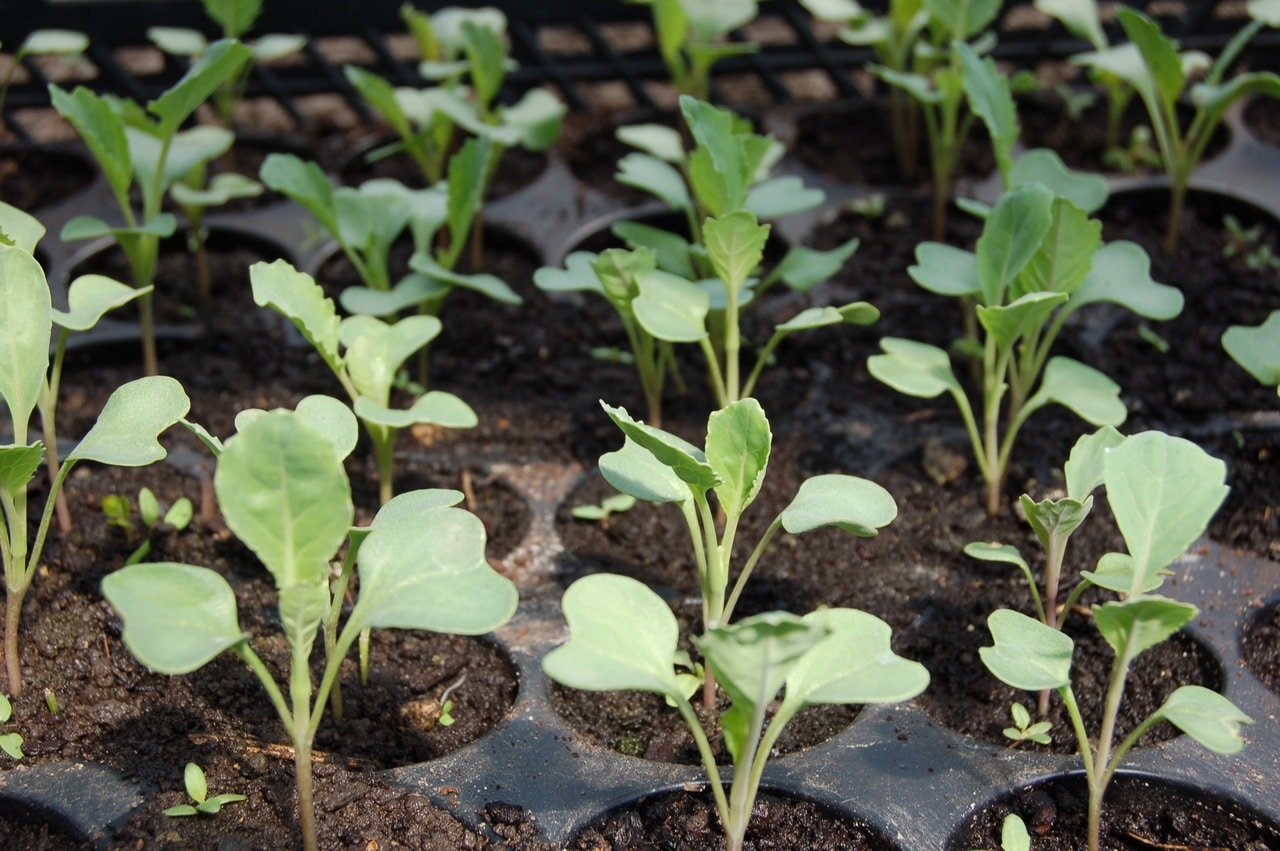
The seedbeds are ideal to have the seeds controlled in the same place, and thus be able to know how many and on what dates they germinate. In addition, they allow you to perform treatments, if necessary, against microorganisms that can easily damage them, such as fungi; and even protect them from herbivorous animals that feed on newly germinated seeds and seedlings, such as snails or slugs.
But How to make seedbeds exactly? Can anything be used as such? We solve these and other doubts below.
How should the seedbeds be?

Clean
When sowing seeds in a seedbed it is key to bear in mind that hygiene is essential. Fungi, one of the main microorganisms that cause the most damage to seeds (and plants), multiply by spores, which are tiny; in fact, to be able to see them at least you would need a magnifying glass. These spores are so light that they can end up anywhere: on the walls of the pot, on a new substrate (that is, one that has not been used before), and even in irrigation water.
Do not be alarmed: they are everywhere, but if measures are taken - very simple, by the way - the risk of infection is minimal. Moreover, when plants that are strong in themselves are sown, such as horticulturals or seasonal plants, no measures are usually taken, although they are recommended so that the more seeds the better.
Starting from this, seedbeds must be as clean as possible, something that is achieved if they are cleaned -in the case that they are made of plastic- with water and a few drops of dish soap, or they are used new ones, just bought.
Made of waterproof material
It is advisable to use as seedbeds things that are made of waterproof materials, such as plastic or mud. The reason is that if cardboard is used for example, if it is not laminated, with the first watering it would spoilNot to mention that it would increase the humidity of the seedbed, something that would cheer up the fungal spores that would not take long to do their thing.
But beware, it is also necessary that they have a hole in the base, for the same reason. Excess moisture kills the seeds.
Homemade (when possible)
Actually, you don't have to buy ready-made seedlings. Surely at home you have many things that will serve you as such, For example:
- Milk containers
- Yogurt glasses
- Plastic cups (often considered single use)
- Plastic bottles
- Cardboard and plastic boxes (shopping bags for example) with which to laminate them
Just keep in mind that you must clean well what you choose before using it, and that you have to poke a hole or two in the base with the tip of a pair of scissors.

How to make a seedbed?
First of all, you have to prepare what may be useful to you:
- Hotbed: of course. It is where you are going to sow the seeds. The homemade ones, the flowerpots, the seedling trays, the peat tablets, etc. will be useful.
- Seeds: try to be fresh, that is, freshly harvested.
- Substratum: it will depend on what you are going to sow, but in general the vermiculite (for sale here) is a good medium for everyone. If you are going to plant garden or native plants, the universal substrate or mulch will work for you. Here You have more information about it, so that you can choose the most suitable according to the type of plant.
- Water: to water the substrate well. If it's rainy, better.
- Watering can or similarIf you don't have a watering can as such, a liter or a liter and a half bottle will serve you if you first make a few holes in its base.
- Fungicide: in spring and autumn you can use powdered copper, but in summer it is preferable to use a spray fungicide to avoid burning the seeds.
Step by step

Fill the seedbed with substrate
The first thing you have to do is fill the seedbed with the substrate you have chosen. Make sure to fill it almost completely. Then when you're done, compact it, either with your hands with a small hand shovel. In this way, you will know if it is necessary to add more.
Water
Now you must water until the substrate is moistened. Pour water until it comes out of the drainage holes. Thus, you will ensure that the seeds can begin to hydrate from the first moment they are sown.
Siembra
When the seedbed has its substrate watered, it is time to sow the seeds. These must be separated from each otherSince if they pile up or are very close together, if many germinate, most of them will not survive. In fact, if you use a seedling tray it is preferable to put two in each socket, and no more; If you use pots or the like, you should put about 2 or 3 in those that have a diameter of 10,5 centimeters, and less if they are smaller.
Likewise, they have to bury a little. For example, if they are one centimeter long, they will be buried between 1,5 and 2 centimeters. If they were more exposed, it is likely that they would not germinate, since the direct impact of the sun's rays on them would prevent that from happening; and if they were further inside, they would be so dark that they would not receive the light stimulus necessary to germinate.
Treat with fungicide
Treatment must be carried out with fungicide, so that the mushrooms don't have a chance to leave you seedless. If you are using powdered copper, simply sprinkle it on the surface of the substrate as if you were adding salt to food.; and if you use a spray, spray / sprinkle also on the surface, until it is well moistened.
Put the seedbed in its place
The only thing left is to place the seedbed in the right place. When in doubt, the best place will be the semi-shadow, but you should know that there are some that want sun from day one, like many palm trees (Phoenix, washingtonia, Parajubaea, etc.), trees (Delonix, Acacia, Leucaena, Albizia, etc.), horticultural plants (lettuce, parsley, peppers, ...), among others.
Have a very good planting.